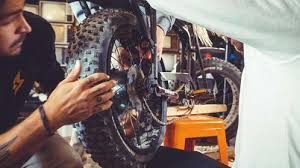In the Netherlands, most electric scooters are not legal on public roads. However, elektrische step legaal specific e-scooters are allowed, provided they have received approval from the RDW (Rijksdienst voor het Wegverkeer). For an electric scooter to be legal, it must be classified as an “electric moped” by the RDW. Simply owning an electric scooter does not grant you permission to ride it on public roads.
Rules for Electric Scooters:
The RDW classifies approved electric scooters as special mopeds, subject to the following regulations:
– Maximum speed of 25 km/h.
– The rider must be at least 16 years old.
– A driver’s license may be required in certain cases.
– The vehicle must be insured.
– Riders must stay to the right in traffic.
– If there is a (moped) cycle path, it must be used.
Before an e-scooter is permitted on public roads, it must comply with various laws and regulations. The Ministry of Infrastructure and Water Management (IenW) has established the ‘Policy rule designating special mopeds’ to ensure safety and regulatory compliance.
Upcoming Changes (Expected in 2025)
The framework for Light Electric Vehicles (LEVs) is expected to come into effect in 2025. Key points include:
– Minimum age of 16 to drive an electric scooter.
– Maximum speed of 25 km/h.
– Maximum weight of 55 kg.
– Mandatory license plate.
– Helmet not required.
– Use of cycle paths.
– All e-scooters must be insured under the Motor Vehicle Liability Insurance Act (WAM).
– New e-scooters must undergo approval and manufacturing supervision by the RDW.
Traffic Rules for Electric Scooters:
– Maximum speed limit of 25 km/h.
– Riding on the cycle path is required.
– Drivers may not use electronic devices while riding.
– Scooters without pedal assistance must be insured, and they must display an insurance plate and a vehicle identification number.
Types of Electric Scooters:
1. **Regular Electric Scooters:** Powered by an electric motor, these scooters do not require pedaling. Most are not allowed on public roads unless approved by the RDW.
2. **Scooters with Pedal Assistance:** These combine pedaling with a motor (maximum 250W) and are allowed on public roads. The speed limit is 25 km/h, and riders must use the cycle path.
RDW-Approved Electric Scooters UrbMob Kick&Go:
One example of an RDW-approved scooter is the **UrbMob Kick&Go**, which uses pedal assistance. Riders must be at least 16 years old and may need an AM driving license. Insurance is mandatory before riding on public roads.
Features of the UrbMob Kick&Go:
– 270mAh battery with up to 35 km range per charge.
– Maximum speed of 25 km/h.
– Four-speed settings.
– Equipped with 8.5” honeycomb anti-puncture tires, lights, reflectors, and an anti-slip mat.
– Foldable and lightweight at 11kg, making it easy to transport.
In summary, electric scooters must comply with strict regulations to be legal in the Netherlands, and only RDW-approved models are permitted on public roads. New rules expected in 2025 aim to further clarify the legal framework for LEVs.

